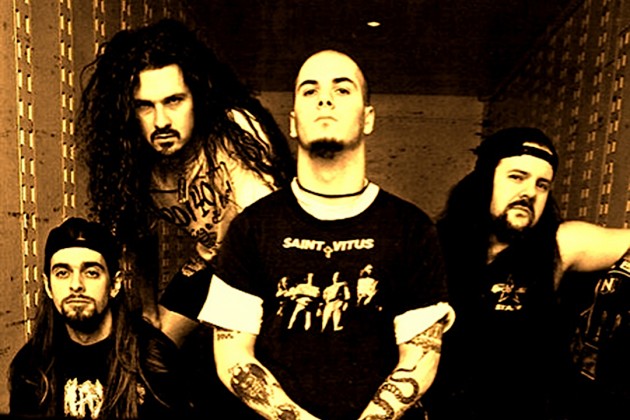Introduction
It’s no secret that I’m a huge fan of the sub-genrification of metal. There’s just so much metal out there, they’re kind of necessary. A sub-genre is essentially a quick label used (mostly by fans) to describe bands with similar sonic characteristics.
For pretty much every major sub-genre, most fans will be able to list a couple big name bands that exemplify the sound. With Thrash, you’ve got the big four (bay area) and the big Teutonic four (Germany).
Death metal has bands like Death (obviously), Morbid Angel, Deicide, Nile, Obituary, and Suffocation bringing up the oldschool end of things – and (being the most popular sub-genre in the world) probably several thousand other bands branching off into even more subgenres.
With Black Metal you’ve got the first wave guys like Bathory, Celtic Frost, and Venom. And then there’s the second wave guys who pretty much defined the genre as most people know it today – guys like Darkthrone, Mayhem, Burzum, etc.
Power metal, Doom, Melodic Death Metal, Glam, Nu Metal, Grindcore – they all have very distinct, easily identifiable sounds. Within a couple of second of listening to any song within these genres, it’s easy to identify where it belongs in the metal family tree.
Except for one. Groove metal.
It’s weird – this is one of those genres that a lot of people know about. Everyone I’ve ever talked to about the topic can list off a few Groove Metal bands. Which is great – except there’s almost zero overlap. If you talk to three different metalheads about Groove Metal and ask for a list of Groove bands – you’re most likely going to get three very different lists. Even the definitions of Groove Metal vary from person to person. It seems like the only band that people can consistently agree falls in the Groove category is Pantera.

Now, there is a pretty big group of people who argue that Pantera (post glam, naturally) is a thrash band.
The argument has some merit, but I have some problems with it. Pantera, like most thrash bands, is a very aggressive riff oriented outfit. However, while thrash is typified by fast tempos, Pantera is generally a mid tempo band by comparison. Also, they generally tend to ride what’s known as “the money riff” for the majority of a song. While this isn’t unheard of in thrash, in my experience it’s not the norm.
Fleshing out a Genre from the Middle Ground between Genres
So seeing as Pantera is a generally agreed upon forefather of the Groove genre, their relationship with thrash metal makes defining Groove Metal much easier.Bearing this in mind, I would like to express a few opinions that will (probably) be a tad unpopular.
Because of the black album, I contend that Metallica were as influential as Pantera in the consolidation of Groove Metal as a genre. Think about it, the things people complained about on the album – catchy riffs, predominantly mid-tempo (as opposed to the breakneck pace of Thrash). They ride the money riff for the majority of songs. It’s mid-tempo Thrash. It meets all the criteria of Groove Metal.
Sepultura’s album “Roots” is widely credited as a Nu Metal album. Interesting thought, but there is nothing remotely rap/hip hop oriented about the album. I would argue that Groove metal and Nu metal developed side by side, and ended up having a lot of similar qualities in terms of sound. I don’t think anyone with half a brain cell can lump this album in the same category as the Linkin Park discography – I lump Roots squarely in the groove metal category.
Slayer’s misfit album, “Diabolus in Musica”, is described by the band themselves as an attempt to jump on the Nu Metal bandwagon. The only problem is, all they did was down-tune and ride some grooves. No DJ’s, no rapping – I also classify this album as Groove.
When it comes to fleshing out and discussing Groove metal nobody does it better than Banger. Check out their episode discussing Groove Metal below (then like and subscribe to their youtube channel, facebook page, etc). Seriously though, these guys know what’s up when it comes to metal. I would argue any list of the most important people in metal today that excludes Sam Dunn is a total crock of shit.
Groove’s Influence on Other Genres
We’ve already touched on the Nu Metal/Groove connection a bit, but now might be a good time to reiterate. Groove and Nu Metal share a timeline (and in many cases, an audience) – they formed a genres around the same time, and they influenced each other heavily. Example – it’s no secret that Sepultura were heavily influenced by Korn’s first album when they released Roots (another reason people try to lump the album in the Nu Metal category).
Nu Metal is very groove-heavy, and it’s safe to say there’s a significant amount of overlap between the genres.Example: Machine Head did a one off nu-metal album before returning to Groove Metal. This is a perfect example of the overlap between Nu Metal and Groove Metal:
Nu-Metal Machine Head
Groove Metal/NWOAHM Machine Head
Which leads me to the New Wave of American Heavy Metal (which was as much a movement in metal is it is a genre). Besides Machine head, bands like Lamb of God and Chimaira (flag-bearers of the NWOAHM) also fall squarely in the Groove Metal category.
In fact, I would contend that most of that wave of metal bands from the 2000-2010 era wouldn’t exist without Groove Metal (specifically Pantera, but all those Groove pioneers played a part in paving the way for the NWOAHM).
These bands have been known, on occasion, to even pay tribute to the late great Pantera…
Not that only NWOAHM bands cover the Groove legends, but there’s enough bands that have paid tribute through the years (even before Dime died) where you can make a pretty solid inference as to the influence of the band (and therefore the genre).
In Conclusion
Probably the strangest thing about Groove Metal is that it just kind of “happened”. It wasn’t like Thrash or Death or Black metal, where you had a scene with several bands that fleshed out the sound and defined it in a short amount of time. Instead it developed over the course of (at least) two decades, influencing at least two major metal movements as it went.
This is the only time an entire genre was (or ever will be) formed in the empty space between extremely fast (i.e Death Metal, Black Metal, Thrash, Speed, etc) and extremely slow (Doom and it’s derivatives) tempos.
The only genre with stranger origins (in my opinion) would be Djent – who the fuck names a genre with an onomatopoeia?


April 12, 2018 at 5:15 pm
What exactly is the money riff? Like what is the concept? I think I know what you’re referring to, but I want to be sure.
LikeLiked by 1 person
April 12, 2018 at 5:20 pm
To make myself sound redundant, it’s the groove riff. In a thrash song, you have faster “thrashy” parts and slower “groove” oriented riffs. Guys like Pantera focused on the slower parts when they noticed they got a better crowd response.
LikeLike
October 12, 2020 at 3:13 pm
While I do agree that Sepultura’s “Roots” is more groove than nu metal, I don’t think nu metal is defined by having hip hop/rap influences itself, but a bunch of things with rapping being optional. I think Johnathan Davis said he saw his band Korn as more a funk band than a metal band. It makes sense when you consider funk to come before hip hop. Heavy funk rock/metal + grunge themes + sometimes “cry” singing, in my opinion. Technically, rap metal is literally any metal genre with rapping.
LikeLike
October 12, 2020 at 4:25 pm
The hip hop and rap influences aren’t limited to lyrical styles and are unquestionable – regardless of the funk influences.
LikeLike